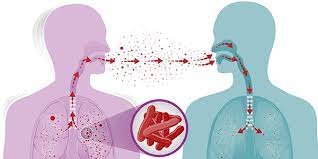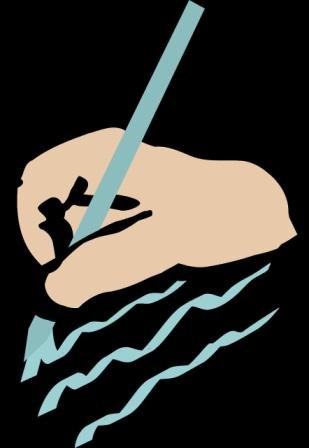As the Covid-19 pandemic has emerged as a severe health hazard to the Indian media fraternity many more prominent print journalists start falling preys to the disaster. Thousands of journalists along with other media employees are infected with the novel coronavirus as they have been playing the role of corona-warriors along with the practicing doctors, nurses, sanitation workers, police personnel etc. Casualty among the media fraternity because of Covid-19 across the country is mounting.
India lately has lost nine journalists to Covid-19 complications within eighteen days where seven victims represented the print media. The latest victim surfaced from Assam as a news presenter named Golap Saikia (52) succumbed to Covid-19 complications on 26 September 2020 in a private hospital. The soft-spoken gentleman used to work as a casual news-reader in All India Radio, Guwahati prior to which he presented news bulletins in Guwahati Doordarshan along with private satellite news channels like DY365, NewsLive, Prime News, etc.
Earlier, Indore (Madhya Pradesh) based senior journalist Manoj Binwal died of the virus infection in the hospital. Binwal (55), who worked for Hindi newspaper Prajatantra, was hospitalised after testing positive for Covid-19 and breathed his last on 20 September. A day back, Agra based journalist Ami Adhar Nidar (50) died of the virus infection at a Gurugram hospital. Associated with widely circulated Hindi newspaper Dainik Jagran, the popular journalist was hospitalised after he tested positive for Covid-19.
Anil Srivastava (68) from Basti in Jammu locality succumbed to Covid-19 on 18 September at a government hospital. Working for the United News of India U(UNI) for many years, Srivastava also edited local newspapers namely Vichar Parakh and Prakash Times. On the same day, Madhya Pradesh lost one of its senior journalists to Covid-19. Harish Choubey (60), who worked for popular Hindi newspaper Dainik Bhaskar from Jabalpur, was hospitalised after testing positive for the virus infection.
Aurangabad-based senior journalist Rahul Dolare (49) died of the infection on 14 September at a government hospital. He was associated with a local newspaper and hospitalised after complaining of mild fever. Chennai-based Tamil journalist-actor Florent C. Pereira (67) also died on the same day in the hospital. Pereira who worked for Kalaignar TV, Win TV and Vijay TV was hospitalised after he tested positive for Covid-19.
Abohar (Punjab) based journalist Naresh Bajaj (57) succumbed to Covid-19 complications on 10 September. Bajaj worked for Sach Kahoon newspaper and he was very active as a frontliner. Ravinder Kumar (30) from Una (Himachal Pradesh) died of coronavirus infection on 9 September. Working for Dainik Jagran, Kumar was sent to the hospital after developing symptoms of Covid-19 and he died on the way. His cremation was conducted following Covid-19 protocols.
Assam earlier witnessed two Covid-19 journo-victims as Udalguri based correspondent Dhaneswar Rabha (35) breathed his last at Guwahati Medical College Hospital on 6 September. Rabha is the first scribe in the North East region to succumb to Covid-19 complications. He was otherwise suffering from renal problems and went for regular dialysis. The next day, senior journalist Ashim Dutta passed away at Silchar Medical College Hospital. Dutta (65), who worked for a Bengali daily in Barak Valley, was also suffering from kidney problems. He was admitted to the hospital after testing positive for Covid-19.
Weeks back, Dhanbad (Jharkhand) based senior journalist Sanjiv Sinha, Gorakhpur (UP) based photo-journalist Rajiv Ketan, Mumbai-based senior film-journalist Shyam Sarma, Nellore (Andhra Pradesh) based scribe Narayanam Seshacharyulu, Pune-based television reporter Pandurang Raikar, Kanpur-based television journalist Neelanshu Shukla, Patiala-based photojournalist Jai Deep, Tirupati-based television reporter Madhusudan Reddy and video journalist M Parthasarathy succumbed to the coronavirus infections.
The list also includes television reporter Ramanathan and news videographer E Velmurugan from Chennai, news presenter Davinder Pal Singh from Chandigarh, television scribe Manoj Kumar from Hyderabad, print-journalist Pankaj Kulashrestha from Agra, Orissa’s journalists – Simanchal Panda, K Ch Ratnam and Priyadarshi Patnaik, etc.
Kolkata based photojournalist Ronny Roy became the first Indian scribe to lose his battle against the dreaded virus. New Delhi-based scribe Tarun Sisodia killed himself undergoing Covid-19 treatment at AIIMS. Maharashtra’s veteran journalist Ashok Churi, who edited Marathi weekly Palghar Times, died at a Palghar based hospital. He later tested positive for Covid-19. The printer-publisher of Asomiya Khabar (Rantu Das) also died at a Guwahati hospital and later tested positive for the virus infection.
With all these casualties, the pandemic has also crashed the India mainstream media industry. Worried owners have already stopped publishing hundreds of physical newspapers and other surviving management closed down their editions in different localities, reduced the number of pages, went to cut salaries and even lay off employees including senior journalists citing shrinking advertisement revenues. Only a few editors could raise voices against the arbitrary retrenchments of journalists while the rest continue to carry on with humiliations in work places.
When hundreds of journalists in Guwahati too turned positive for Covid-19, the concerned newspapers and other media outlets tried to avoid making news out of the development. Some infected media persons however had to make personal revelations in the social media. Various organisations including the Journalists’ Forum of Assam (JFA) have criticised the media outlets for their selective reporting over the issue arguing that they continued identifying other Covid-19 patients by name and photographs, but remain silent collectively when their employees turned positive of the infection.
What is amazing is that Assam (read State health minister Dr. Himanta Biswa Sarma), unlike the other Indian provinces, used to name all individuals who turned Covid-19 positive and the local media outlets used the entire information. The logic behind it was that one should be publicly named and photographed after testing positive for Covid-19 to make others who came in contact with the concerned individual for necessary precautions. It was termed as a social responsibility as the concerned group of people could take it as a caveat and go for necessary screenings.
But shockingly, when the scribes and media workers tested positive for Covid-19, no media outlets made revelations that their employees were also infected by the virus. What is wrong if the editors named their employees as corona-warriors as social responsibilities? After all, testing positive for Covid-19 by anyone is quite a normal phenomenon (and in no way is a crime or a matter of shame). Rather, the editors should (could) have done it as a pride citing their employees got infected by the new-found virus while working during the pandemic.


























